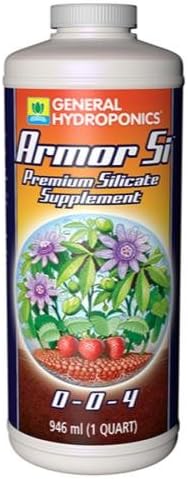Activity
Mon
Wed
Fri
Sun
Oct
Nov
Dec
Jan
Feb
Mar
Apr
May
Jun
Jul
Aug
Sep
What is this?
Less
More
Memberships
School Of Hydroponics L & E
120 members • $27/m
1 contribution to School Of Hydroponics L & E
When to use Silica
In the world of hydroponic gardening, much of the conversation centers on the essential primary and secondary nutrients. We meticulously balance nitrogen, phosphorus, and potassium, and ensure our micronutrients are in check. But there is a powerful, often overlooked element that can fundamentally change the health and resilience of your plants: silica. The Role of Silica in Plant Structure Silica is not classified as an essential nutrient, yet its impact on plant health is significant. When plants absorb silica, it is deposited into the cell walls of leaves, stems, and roots. This process creates a physical barrier that strengthens the plant's entire structure. Consider a plant without adequate silica—its stems may be thin and its leaves prone to wilting under stress. Now, visualize that same plant with silica-fortified cell walls. The structure is reinforced, much like rebar within concrete. This internal strengthening makes the plant better equipped to handle environmental stresses like heat and drought, and provides a physical defense against pests and fungal diseases. The hardened cell walls are difficult for pests like spider mites to penetrate, and they can inhibit the spread of common issues like powdery mildew. A Strategic Approach to Application Timing is crucial when integrating silica into your nutrient regimen. For maximum benefit, it should be introduced early and consistently. I recommend starting with a low dose during the vegetative growth phase and continuing its use throughout the flowering or fruiting stage. This allows the plant to build a robust internal structure from the very beginning. When adding silica to your reservoir, it is important to add it first. Silica products typically have a high pH and will raise the pH of your water. Adding it first allows you to adjust the pH back into the optimal range (typically 5.5 to 6.5) before adding your other nutrients. This prevents any potential issues with nutrient availability or precipitation.

1-1 of 1
Active 6d ago
Joined Sep 4, 2025
Powered by


